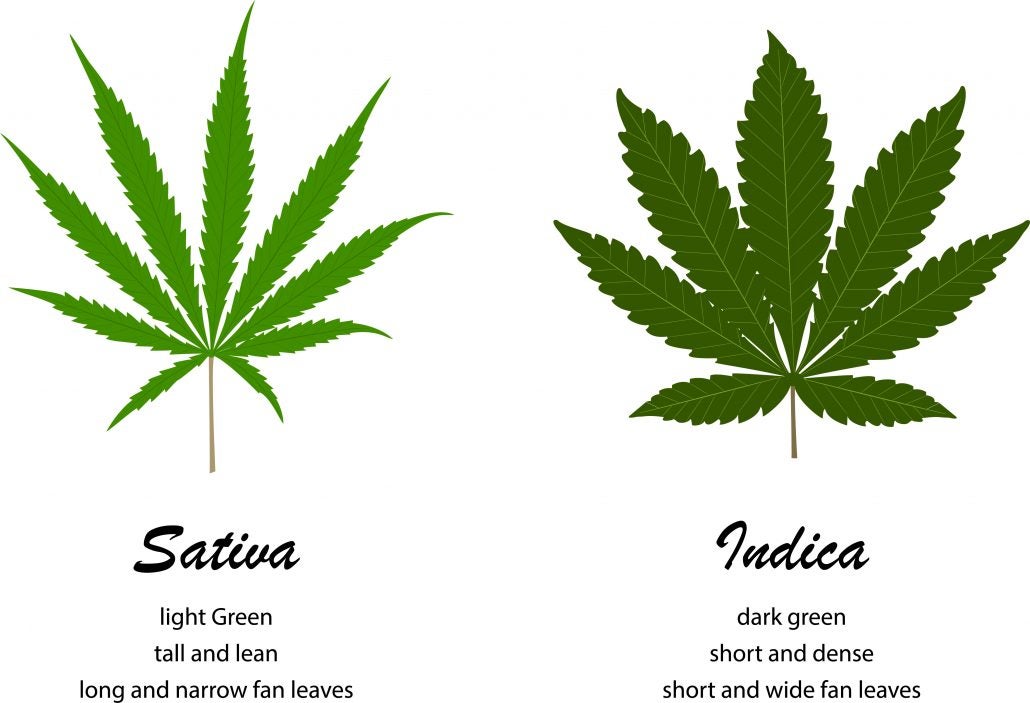If you’re researching cannabis and its effects, you’re probably wondering: what is the difference between Sativa, Indica, and hybrid strains? Although each of these strains has distinctive traits, the differences are not always as clear-cut as common lore would have us believe. However, to get the most out of your cannabis experience, it’s crucial to understand the distinctions.
Do the Classifications Matter?
Whether a cannabis strain is an Indica, Sativa, or Hybrid can be a valuable way to identify different varieties of cannabis. But it is not the only or even the most effective way to categorize cannabis, even if it is the most common.
The Sativa, Indica, or Hybrid distinctions exist mainly for the consumer, as it gives you a quick and easy way to classify strains. But it doesn’t really speak to the science of the plant because this classification system doesn’t take into account the cannabinoids or terpenes, both of which have huge medicinal potential and benefits.
When choosing a strain, it makes sense to consider the levels of cannabinoids like THC and CBD in the plant as individual strains have different levels of THC and CBD, despite their Indica, Sativa, or Hybrid classification.
Terpenes, on the other hand, give cannabis its plethora of aromas and flavours. Terpenes have therapeutic effects as well, so checking out a strain’s terpene profile (if it’s available) could be another factor that helps steer you towards the right strain.
Additionally, it’s practically impossible to find a pure Sativa or Indica these days. All the strains out there are hybrids, with some being in the middle and others being Indica-dominant or Sativa-dominant, which produces even more variability.
What Are the Main Differences Between Them?
There are a few distinct differences between Indica, Sativa, and Hybrids. Although these general classifications hold true for the most part, there are some variables, as discussed earlier. But for now, let’s stick with the general effects of each strain, starting with a chart that summarizes the properties of Indica, Sativa, and hybrid strains. We’ll get into more specifics later.
| Effect | Best For | |
| Indica | Relaxing, Body High | Anxiety, Insomnia, Pain, Seizures |
| Sativa | Energizing, Cerebral | Stress, Anxiety, Depression |
| Hybrid | Depends on CBD:THC ratio | All the above |
Indica
Indica is known as a “downer,” or a strain that promotes strong feelings of relaxation. Because of its deeply relaxing effects, it is better for use at night.
Since it can cause full-body relaxation and feelings of sleepiness, Indica is typically used to treat ailments such as insomnia when used medicinally. It is also useful in treating epilepsy, seizures, and anxiety.
Sativa
Sativa is sometimes referred to as an “upper,” as it can boost energy and increase creativity. Since it produces such an energetic state of mind, it’s usually best to use Sativa during the day.
These strains are sometimes used medicinally for reducing stress and anxiety and are known for their “mind high” effect.
Hybrids
As the name suggests, hybrids have a combination of effects found in both strains. Hybrids are typically classified as either Indica dominant, Sativa dominant, or balanced, with effects that mirror those of the dominant type. Many Hybrids are carefully crafted to treat specific ailments or have a higher level of THC or terpenes.
Even though most cannabis can be classified by the standard effects of either Indica, Sativa, or Hybrid, it is not a hard-and-fast rule. The most reliable way to predict any particular strain’s effects is to look at the cannabinoid levels and terpenes. Different cannabis consumption methods and your body’s chemical composition makes a difference, as well.
You might be wondering which is better—Sativa, Indica, or Hybrids. It ultimately depends on your body, medical conditions, and preferences, as each type has great benefits. There are many differences between Hybrids, Indica, and Sativa, which means you’ll probably be able to find the perfect strain for your needs.

Cannabinoids
How CBD Works
CBD (cannabidiol) is one of the two primary cannabinoids found in every strain of cannabis. Unlike THC (tetrahydrocannabinol), CBD is not psychoactive and does not get you high when consumed on its own. For this reason, it is often used medicinally.
Instead of directly binding to the cannabinoid receptors in our body, CBD often acts as an antagonist, blocking the cannabinoid receptors instead of activating them. This can slow down the breakdown of endocannabinoids, which are produced naturally by our bodies. Since CBD blocks the receptors, it causes the endocannabinoids to stay in your body longer.
An excellent example of CBD being an antagonist is with anandamide, a major endocannabinoid produced by our bodies associated with pain relief. As CBD blocks the receptors, it slows the absorption of anandamide, leading to increased levels of it in our body over a longer period of time, which helps reduce pain.
The endocannabinoids produced by our body, along with the cannabinoid receptors and enzymes, make up the Endocannabinoid System, affecting many different aspects of our body, including appetite, sleep, mood, and memory.
THC
While CBD does not have any psychoactive effects, THC is the opposite, producing a sense of euphoria and energy when consumed.
Unlike CBD, THC binds with cannabinoid receptors throughout the nervous system and brain. It is most likely to bind with CB1 receptors and produces different effects depending on where the receptors are in the brain. That is why it’s crucial to find the right dosage of THC for your body—you don’t want to overwhelm your cannabinoid receptors and trigger unwelcome effects.

Cannabinoids in Hybrids
Hybrids are strains of cannabis bred to contain specific levels of cannabinoids that will produce certain effects. Typically, the levels of CBD and THC are carefully selected to ease particular medical conditions.
Indica-dominant hybrids usually affect the body more than the mind, but Hybrids can also be Sativa-dominant and affect the mind more than the body.
Finally, hybrids can have a more balanced amount of the two types of cannabinoids, producing a strain that equally affects both body and mind.
The benefit of hybrids is that they give the consumer more balanced effects. A very dominant Sativa or Indica strain might be too overwhelming for someone, but a Hybrid with a bit of Indica and Sativa characteristics might produce an enjoyable experience.
Why Terpenes are Important
If you’ve ever enjoyed the scent of fresh flowers, a ripe tomato, or your favourite essential oil, you’ve experienced terpenes. Terpenes are aromatic oils that give a plant its fragrance.
They are a big part of why it’s important not to blindly rely on Indica and Sativa classifications. Even though two strains of cannabis may have similar THC and CBD levels, they might produce different effects in the body if they have different terpene profiles.
In marijuana, terpenes not only produce the plant’s odour but also make a difference in how the plant affects you. To understand this, think about essential oils. Have you ever put lavender essential oils on your pillow to ensure a good night’s sleep because the terpenes in lavender are supposed to produce a relaxing effect?
Similarly, terpenes have therapeutic effects of their own that can be heightened through their interaction with cannabinoids and other terpenes. For example, myrcene is one of the most common terpenes found in cannabis. This terpene is described as having a fruity, hop-like scent, and studies show that it helps reduce inflammation.
Other common terpenes include:
- A-Pinene: Increases energy, boosts memory and focus, and has a woody, piney scent.
- Limonene: Reduces depression, anxiety, and nausea, improves mood, and smells like citrus.
- Humulene: Provides pain relief, reduces inflammation, suppresses the appetite, and has a spicy, earthy, herbal scent.
Each of these terpenes works independently and in tandem with the strain’s cannabinoids producing an entourage effect, whereby one compound directly affects the benefits of another. It’s important to select a cannabis strain that smells good to you and produces the type of effect you hope to achieve. These effects often vary from person to person.
Although not as much is known about terpenes, it is clear that they help create a well-rounded cannabis experience.
Find Your Favourite
Now that you understand the difference between Indica, Sativa, and Hybrid strains—it’s time to find your favourite!
At Budmail, we carry a wide selection of top-shelf cannabis flower, concentrates, tinctures, and edibles. You can sort our products by strain type, making it easy to build yourself a sampler. Check out our shop today!
